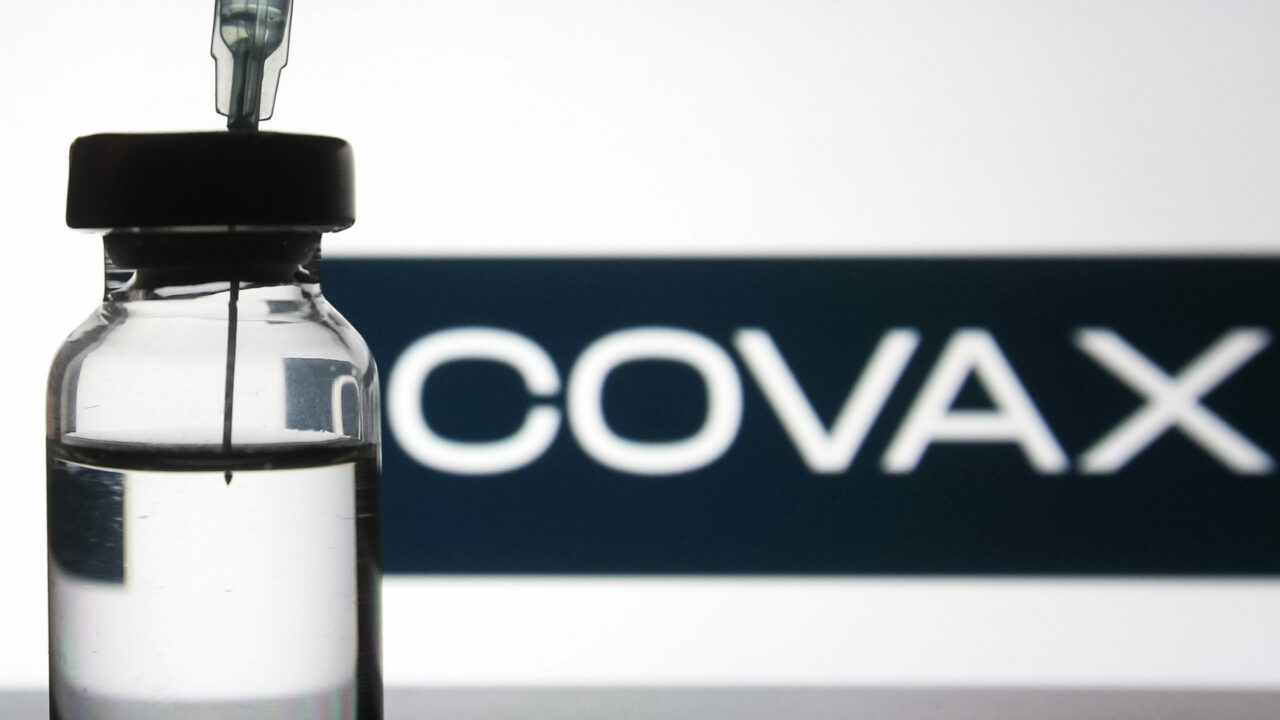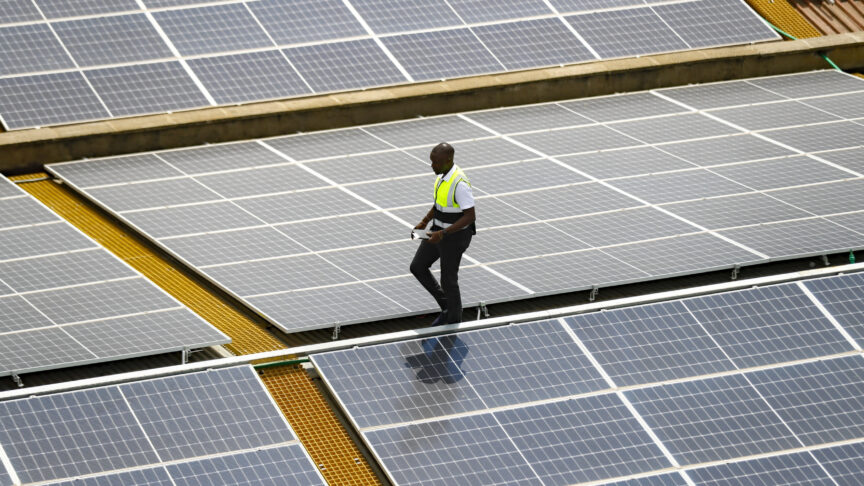How Europe can work with Africa amid the global scramble for vaccines
China is posed to reap geopolitical gain via vaccine diplomacy if Europe does not prioritise Africa
As people around the world begin to receive the covid-19 vaccine, the question of which countries can access it – and to what extent – looms large. The vaccine is spoken of as a “global public good”, but it is already apparent that some parts of the world will have it in substantial numbers much sooner than others. Scarcity creates a market, and the vaccine becomes a valuable geopolitical commodity for those with an excess at their disposal.
Structural flaws in the multilateral response
In April 2020, in the absence of US (or Chinese) global leadership around a multilateral response to the pandemic, a constellation of global health actors, European governments, and private foundations set up a multilateral response platform called the ACT Accelerator under the WHO. One of its core tasks was to help the development and manufacture of the vaccine, via the COVAX facility. By pooling advance commitments to purchase vaccines from participating countries, COVAX offered guaranteed demand to pharmaceutical manufacturers, enabling more of these to stomach the costly upfront investment in developing and producing the vaccine. To the participating countries, its offer was one of hedging bets: access to a wider range of potential vaccines rather than relying on a single producer that may or may not succeed. Through a separate financing mechanism, COVAX also covers – to a degree – the vaccine costs for low-income countries.
While a valiant effort to fill the gap in global leadership, COVAX’s handicap is that shared by all multilateral tools: membership engagement determines efficacy. Had the entire world agreed to pool its full resources in it, then COVAX might have functioned as envisaged. But while China joined recently, and the United States under a Biden administration probably will too, their absence at inception helped create a two-tiered approach. Wealthy countries began pursuing bilateral deals with vaccine manufacturers, thereby obviating COVAX’s hedging proposition to wealthier countries. And, since global vaccine manufacturing capacity is limited, these bilateral deals end up being with the same vaccine producers that COVAX’s pool relies on. These bilateral advance purchases from wealthier countries are in such quantities that servicing them will come at the cost of potential COVAX stocks. For a sense of scale, countries that are classed as high income, or upper-middle and lower-middle income, have confirmed purchases covering 4.1 billion, 1.1 billion, and 2 billion doses respectively. COVAX, meanwhile, seeks to secure 2 billion doses by end 2021 for all participating countries.
COVAX’s founding ideal was for all countries to pool resources and then provide for the entire globe on an equitable basis. But as vaccine nationalism shifted wealthy countries towards bilateral acquisition, COVAX’s raison d’être has also evolved. With some middle-income, but all low-income countries unable to provide for themselves bilaterally, COVAX is now their sole option. To that end, COVAX aims to provide 2 billion doses for high-risk groups by close of 2021 and then aims to cover 20 per cent of the population of all participating countries – but de facto now only the low- and some middle-income participating countries – further in the future. Still, these countries do not accept that they should be satisfied with a more modest vaccination goal than that of the developed world. If the vaccine is a global public good, why should the poorest only vaccinate 20 per cent of their population?
The African Union has done the maths and concluded that relying solely on COVAX will put its members at the back of the global queue. As such, Africa is now working to compete in the bilateral vaccine purchasing market along with wealthier countries. To date, no low-income country has secured a bilateral vaccine purchase agreement with a major Western producer. But China is changing that by creating a different option. It is promising preferential agreements for Chinese-produced vaccines covering Asia, Latin America, and Africa as well as £1 billion loan for procurement support. It has already struck vaccine deals with less developed Asian countries. Russia is a player too, as is India. But China is emerging as the first, best option for Africa.
China identifies opportunity in crises
China has concluded that aid is investment; Europe still thinks that aid is charity.
China has also claimed that it would treat its nationally produced share of the vaccine as a global public good. That means producing it for use mostly beyond its borders, the assumption being China’s better containment of covid-19 means domestic need is far less than in the West. But anyone yearning for signs that China is being enticed into a rules-based multilateralism is misleading themselves. China will engage with COVAX to a degree, but its real geopolitical windfall is to be reaped via bilateral vaccine diplomacy.
China identifies opportunity in times of crisis, treating these situations as an opening to press its interest, whereas Europe often sees them as a burdensome moral obligation. The Chinese analysis leads to the conclusion that aid is investment; the European perspective, that aid is charity. This cedes agency to China and allows it to better convert its crisis response into influence.
Against this backdrop, Europe might be motivated to greater action if it realises what is at stake. If Europe takes a cue from China’s opportunity posture and understands this issue is critical to the Europe-Africa relationship, it could then start to tap into deeper reservoirs of European political capital to apply the language of power.
What should Europe do?
Europe quietly recognises its contribution to COVAX’s weakness by jumping on the vaccine nationalism bandwagon. The solution it has proffered is increased support to COVAX: greater financing for low-income countries to cover the costs of the (limited) vaccines on offer as well as (possibly) making excess European vaccine doses available (in the future, presumably once Europe has more than it needs).
But the immediate need is for more vaccine doses. Europe will have difficulty producing more vaccines in the short term, which in turn means COVAX’s limited stocks will remain so. And most European-produced vaccines – apart from the AstraZeneca vaccine – are expensive and poorly suited to Africa, where maintaining the necessary cold chain integrity will prove difficult.
This is where China hopes to come in by providing alternative Chinese-produced vaccines, likely at a lower cost, and perhaps in a form better suited to application in the African context (though with many open questions as to the Chinese vaccine’s efficacy).
But Europe could make a game-changing move that at the same time offers a far greater value proposition for African states: enable African countries to make the vaccine themselves. This would not be an immediate silver bullet, but Africa will have a long wait for Western-produced vaccines anyway. And African-produced vaccines would focus on the needs of the African specific context, such as prioritising less extremely cold-chain-dependent varieties. The scale of the gesture would signal a seriousness of intent currently missing and see off any whiff of hypocrisy.
A proposal put forward by South Africa and India to waive intellectual property in connection with covid-19 at the World Trade Organization faces stiff resistance, including from the European Union. If the proposal went ahead, it would allow others, such as African manufacturers, to produce the vaccine. The EU argues that, rather than legislate a waiver, technology transfer can occur on a voluntary basis. To lend credence to that offer, what the EU now could do is to make a concrete offer around voluntary transfer options for African producers.
The Pfizer vaccine candidate was supported by a grant of nearly $443m from the German government through its partner BioNTech, and the European Investment Bank loaned over $118m. Similar funding arrangements with other European pharmaceuticals exist as well. These contributions from public funds mean the EU has a degree of leverage to persuade the pharmaceutical producers to actively support technology transfer to Africa. The EU could centralise such an arrangement so that it applies across the EU 27, making for one special arrangement rather than a proliferation of exceptions across European states.
It may yet emerge that China’s vaccine production falls short or has quality issues. Europe may also manage to scale up production and decide that that its over-acquisitiveness means it has vaccines left over. But in this scenario China will not abandon its objective. It will simply shift approaches. The remaining option will be support to African vaccine manufacture. Europe should move first.
The European Council on Foreign Relations does not take collective positions. ECFR publications only represent the views of their individual authors.



